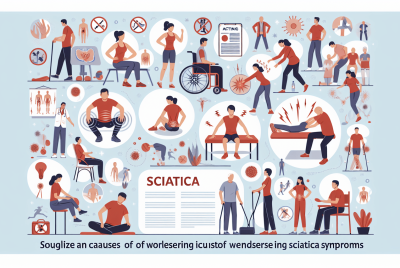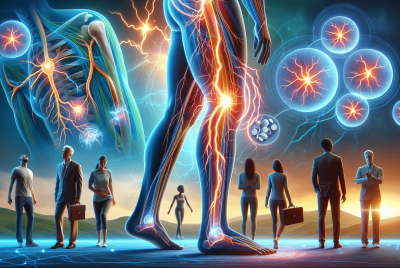What Is The Number 1 Back Pain Relief?
Have you ever wondered what the best solution is for relieving back pain? Look no further, as this article aims to shed light on “What Is The Number 1 Back Pain Relief?” Whether you experience occasional soreness or chronic discomfort, finding the right remedy can make all the difference in regaining control over your life. So, let’s explore the various options available and discover the top choice for alleviating back pain once and for all. Get ready to bid farewell to those nagging aches as we embark on this journey together.
What is the number 1 back pain relief?
When it comes to finding relief for back pain, it can be overwhelming to sift through all the options available. With so many treatments, remedies, and therapies out there, how do you know which one is the best? While there isn’t a one-size-fits-all answer to this question, there are several approaches that are widely considered to be effective for managing and alleviating back pain. In this article, we will explore various methods and explore their benefits, so you can find the number one back pain relief that works best for you.
Understanding the causes of back pain
Before delving into the different relief options, it’s important to have a basic understanding of the causes behind back pain. Back pain is a common complaint that can be caused by a multitude of factors. From muscle strains and sprains to herniated discs or spinal abnormalities, identifying the root cause of your pain is crucial in determining the most effective treatment. Sometimes, back pain may be a result of poor posture, sedentary lifestyle, or even stress. By understanding the underlying causes, you can make informed decisions when seeking relief.
Importance of seeking professional advice
While it may be tempting to try various at-home remedies or over-the-counter solutions, it is highly recommended to seek professional advice when dealing with persistent or severe back pain. Consulting with a healthcare provider, such as a physician or physical therapist, can help you pinpoint the exact cause of your pain and develop a personalized treatment plan tailored to your needs. They have the expertise and experience to diagnose and address your back pain effectively.

Natural remedies for back pain relief
Natural remedies can often provide effective relief from back pain. One of the most commonly recommended approaches is heat therapy, which helps relax muscles and increase blood flow to the affected area. Applying a hot pack or taking a warm bath can provide temporary relief. Cold therapy, on the other hand, can help reduce inflammation and swelling. Alternating between hot and cold treatments can offer soothing relief.
Additionally, incorporating exercises like yoga or tai chi into your routine can strengthen your core muscles, improve flexibility, and promote better posture. These low-impact activities can alleviate back pain in the long term. Other natural remedies include herbal supplements, such as turmeric or ginger, which possess anti-inflammatory properties.
Over-the-counter medications for back pain relief
Over-the-counter (OTC) medications can provide temporary relief from mild to moderate back pain. Nonsteroidal anti-inflammatory drugs (NSAIDs), like ibuprofen or naproxen, can help reduce inflammation and alleviate discomfort. Acetaminophen is also commonly used for pain relief but does not have anti-inflammatory properties.
It is important to note that while OTC medications can be effective for short-term relief, they may not address the underlying cause of the pain. If the pain persists or worsens, it is advisable to seek professional medical advice.

Prescription medications for back pain relief
For more severe or chronic back pain, prescription medications may be necessary. Muscle relaxants, such as cyclobenzaprine, can help relieve muscle spasms and promote relaxation. Opioids may be prescribed in certain cases, but their long-term use is generally discouraged due to the risk of dependence and side effects.
Nerve pain medications, like gabapentin or pregabalin, are often prescribed for conditions such as sciatica or neuropathy. These medications work by reducing nerve sensitivity and can provide significant relief for those experiencing nerve-related back pain. However, it is crucial to follow the dosage and guidance provided by a healthcare professional when taking prescription medications.
Physical therapy for back pain relief
Physical therapy is a widely recommended treatment option for individuals with back pain. Through targeted exercises, stretches, and manual therapy techniques, a licensed physical therapist can help improve strength, flexibility, and overall function. They will assess your individual needs and develop a personalized treatment plan to address the specific causes of your back pain. Physical therapy can not only provide relief but also help prevent future pain and injuries.
Chiropractic care for back pain relief
Chiropractic care focuses on manual adjustments and manipulation of the spine to restore proper alignment and alleviate pain. Chiropractors are trained to identify misalignments or subluxations in the spine that may be causing back pain. Through gentle adjustments, they can improve joint mobility, reduce inflammation, and promote healing. Many individuals find chiropractic care beneficial for managing and relieving back pain, especially when combined with other treatments like physical therapy.
Massage therapy for back pain relief
Massage therapy can be a soothing and effective approach to back pain relief. Licensed massage therapists use various techniques, such as deep tissue massage or Swedish massage, to target tight muscles, improve circulation, and reduce pain. Massages can promote relaxation, release tension, and alleviate stress, all of which can contribute to alleviating back pain. However, it’s important to ensure that the massage therapist is experienced and knowledgeable about treating back pain specifically.
Acupuncture for back pain relief
Acupuncture, an ancient Chinese practice, involves inserting thin needles into specific points on the body to promote healing and pain relief. When it comes to back pain relief, acupuncture has been shown to stimulate the release of endorphins, which are natural painkillers. It can also help improve blood flow to the affected area and reduce inflammation. Many individuals find acupuncture sessions relaxing and beneficial for reducing back pain, but it’s essential to consult with a licensed acupuncturist for the best results.
Exercise and stretching for back pain relief
Engaging in regular exercise and stretching can significantly contribute to back pain relief and prevention. Strengthening your core muscles, specifically the muscles of your abdomen and back, can provide support to your spine and reduce the risk of injury. Low-impact exercises, such as swimming or walking, can improve overall fitness without placing excessive strain on your back. Additionally, incorporating stretching exercises, like gentle back stretches or yoga poses, can enhance flexibility and relieve muscle tension. Always consult with a healthcare professional or physical therapist before starting any new exercise routine, especially if you have chronic back pain or injuries.
Finding your number 1 back pain relief
While there isn’t a one-size-fits-all solution to back pain, understanding the various treatment options available can help you find the relief that works best for you. It’s important to prioritize your health and consult with healthcare professionals to determine the underlying cause of your back pain. Whether you opt for natural remedies, seek professional assistance, or explore alternative therapies, finding your number 1 back pain relief can lead to a more comfortable and fulfilling life, free from the constraints of persistent pain.




